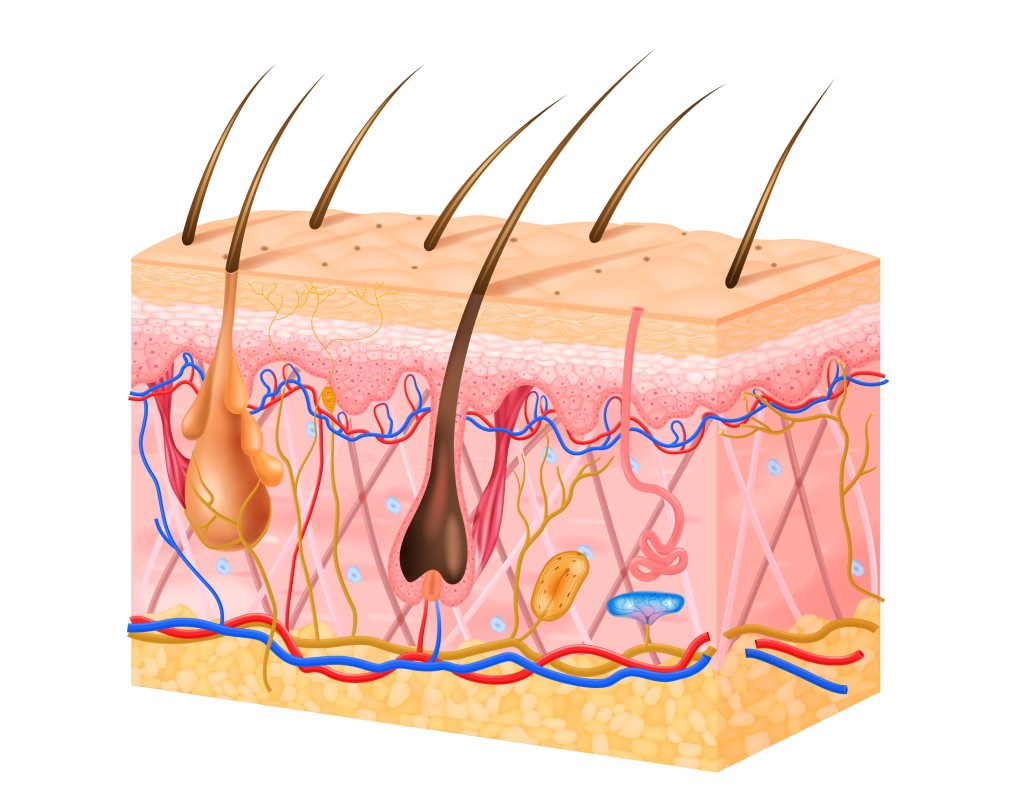
Image by macrovector on Freepik
Anatomical features of the integumentary systems in various vertebrates, including fishes, amphibians, reptiles, birds, and mammals.
| Features | Fishes | Amphibians | Reptiles | Birds | Mammals |
|---|---|---|---|---|---|
| Skin Layers | Epidermis and dermis | Epidermis and dermis | Epidermis and dermis | Epidermis and dermis | Epidermis, dermis, hypodermis |
| Glandular Structures | Mucous and poison glands | Mucous and granular glands | Oil glands | Uropygial gland | Sweat, sebaceous, and mammary glands |
| Keratinization | Minimal | Minimal | Moderate | High | High |
| Scales | Present | Absent | Present | Absent (replaced by feathers) | Absent (replaced by hair/fur) |
| Feathers/Fur | Absent | Absent | Absent | Feathers | Fur or hair |
| Sensory Organs | Lateral line | Poorly developed | Limited | Limited | Highly developed |
| Coloration | Pigment cells (chromatophores) | Chromatophores | Chromatophores | Melanin and carotenoids | Melanin |
| Thermoregulation | Ectothermic | Ectothermic | Mostly ectothermic | Endothermic | Endothermic |
| Water Retention | Poor (constant aquatic habitat) | Moderate (mucous helps) | Good (scales prevent loss) | Good (oily feathers) | Excellent (fur and skin oils) |
| Regeneration | High (fins and scales) | Moderate (limbs) | Moderate (tail) | Low | Low |
Key Points
- Skin Layers: Mammals have an additional hypodermis layer, not present in other vertebrates.
- Glandular Structures: Only mammals possess specialized sweat, sebaceous, and mammary glands.
- Keratinization: Birds and mammals exhibit a higher degree of keratinization for better protection.
- Sensory Organs: Sensory features are most developed in mammals, aiding in complex behaviors.
- Thermoregulation: Birds and mammals are endothermic, allowing for a greater range of habitats.
- Water Retention: Reptiles, birds, and mammals have adaptations for minimizing water loss, unlike fishes and amphibians which are more dependent on aquatic environments.